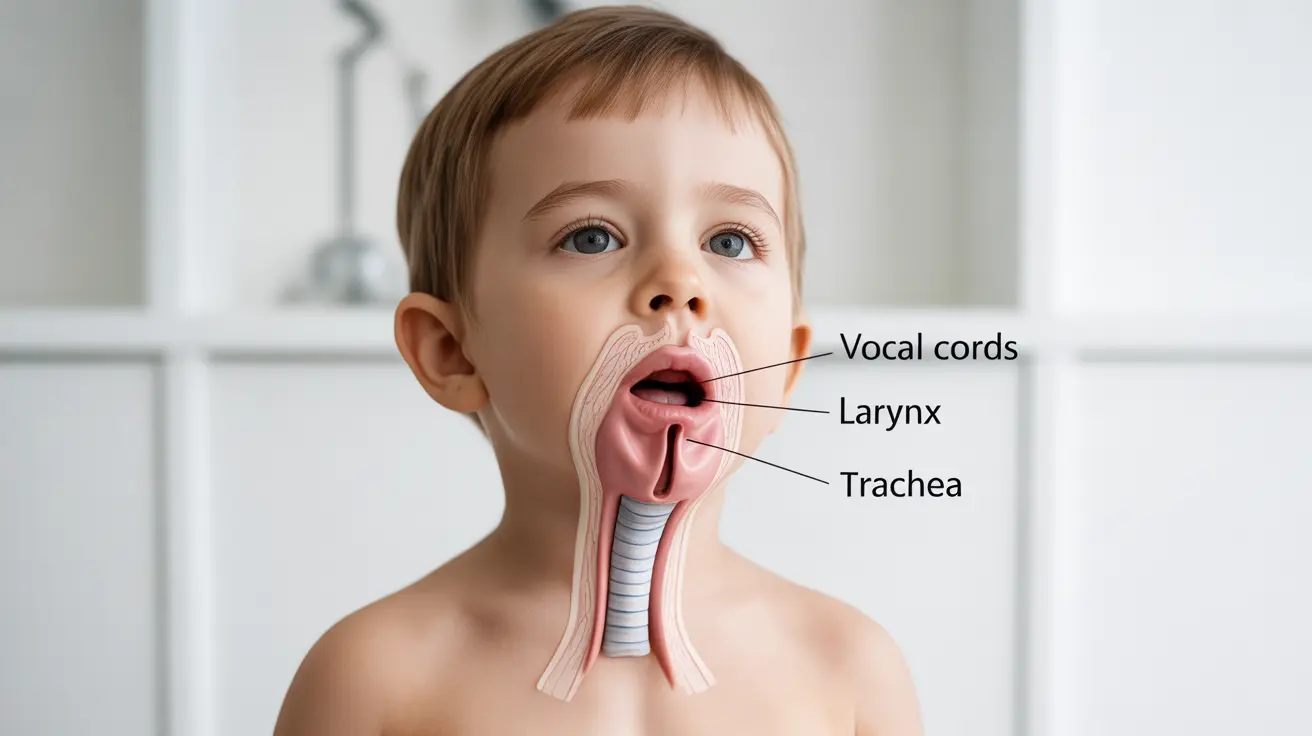Stridor is a high-pitched, whistling sound that occurs during breathing, often indicating a narrowing or blockage in the upper airway. This distinctive breathing sound can be concerning for both parents and healthcare providers, as it may signal various underlying conditions that require medical attention.
While stridor can affect people of all ages, it's particularly common in young children due to their naturally smaller airways. Understanding the causes, symptoms, and appropriate treatment options is crucial for managing this condition effectively and knowing when to seek immediate medical care.
What Causes Stridor?
Stridor can develop from various underlying conditions that affect the upper airway. Common causes include:
- Laryngomalacia (soft, floppy tissue above the vocal cords)
- Vocal cord paralysis
- Infections (croup, epiglottitis)
- Foreign body aspiration
- Trauma to the airway
- Tumors or growths
- Allergic reactions
The location and timing of stridor often provide important clues about its cause. Inspiratory (breathing in) stridor typically suggests an issue above the vocal cords, while expiratory (breathing out) stridor may indicate a lower airway problem.
Recognizing Stridor Symptoms
Besides the characteristic high-pitched breathing sound, other symptoms may accompany stridor:
- Difficulty breathing
- Rapid breathing
- Retractions (chest wall pulling in during breathing)
- Blue-tinted skin (cyanosis)
- Difficulty feeding in infants
- Changes in voice or cry
Diagnosis and Evaluation
Healthcare providers use several methods to diagnose stridor and identify its underlying cause:
Physical Examination
The initial evaluation includes a thorough physical exam, focusing on breathing patterns, airway assessment, and overall health status.
Diagnostic Tests
Depending on the suspected cause, doctors may recommend:
- Flexible laryngoscopy
- X-rays of the neck and chest
- CT scan
- Bronchoscopy
- Pulmonary function tests
Treatment Approaches
Treatment for stridor varies based on the underlying cause and severity of symptoms. Options may include:
Conservative Management
- Observation and monitoring
- Humidified air
- Positioning changes
- Breathing exercises
Medical Interventions
- Medications (anti-inflammatory drugs, antibiotics)
- Oxygen therapy
- Epinephrine treatments
- Corticosteroids
Surgical Options
In some cases, surgery may be necessary to address structural problems or remove blockages causing stridor.
When to Seek Emergency Care
Certain symptoms warrant immediate medical attention:
- Severe difficulty breathing
- Blue lips or face
- Extreme anxiety or distress
- Drooling or difficulty swallowing
- High fever with breathing difficulties
Frequently Asked Questions
1. What causes stridor and how can I tell if it is serious? Stridor is caused by narrowing or obstruction of the upper airway. It's considered serious if accompanied by difficulty breathing, blue-tinted skin, or significant distress. Any sudden onset of stridor requires immediate medical evaluation.
2. How is stridor diagnosed in children and adults? Diagnosis typically involves a physical examination, detailed medical history, and possibly imaging studies or endoscopic procedures to visualize the airway. The approach is similar for both children and adults, though children may require more specialized care.
3. What treatments are available for managing stridor symptoms? Treatment options range from conservative approaches like humidity and positioning to medical interventions including medications and surgery. The specific treatment depends on the underlying cause and severity of symptoms.
4. Why is stridor more common in young children than adults? Children have naturally smaller airways and softer cartilage supporting their respiratory tract. This anatomical difference makes them more susceptible to airway obstruction and the resulting stridor sound.
5. When should I seek emergency care for someone with stridor? Seek immediate medical attention if stridor is accompanied by severe breathing difficulty, blue-tinted skin, extreme distress, inability to swallow, or high fever. These symptoms may indicate a life-threatening condition requiring urgent intervention.




